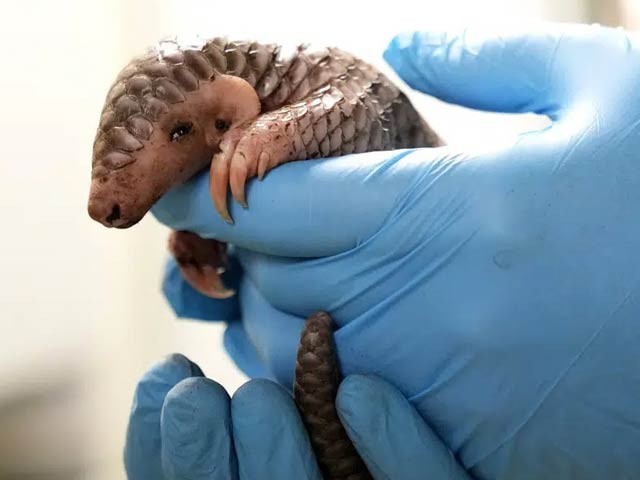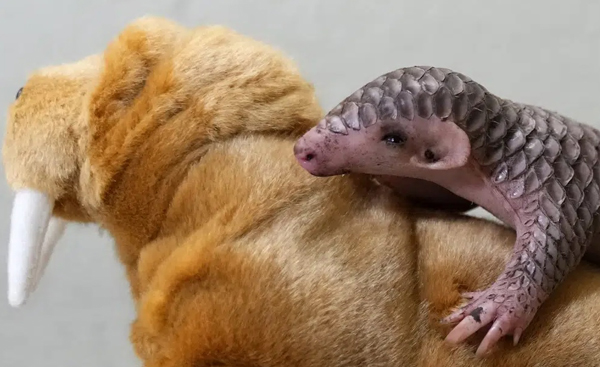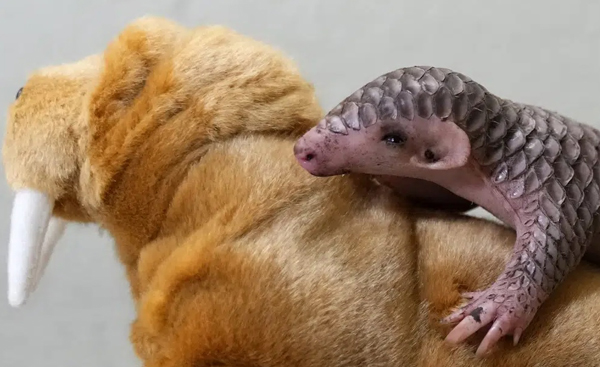
The birth of the first Chinese pangolin in Europe in modern history is an important milestone. Photo: AP
Prague: For the first time in the Prague zoo, the female baby of the Chinese pangolin has opened its eyes, which is not only in China, but also in the whole world, the animal is facing extinction.
Experts at the Prague Zoo in the Czech Republic have announced that Europe’s first pangolin baby has been born in captivity, a step forward for the conservation of this important species.
The baby pangolin, born on February 2, 2023, was not announced immediately after its birth because it was initially underweight and was losing weight. The experts tried hard to find out, it was revealed that the baby’s mother ‘Run Ho Teng’ had insufficient milk.

Taiwan was immediately contacted and the experts there advised to give him cat’s milk. While female pangolins were stimulated in several ways to produce more milk. The baby pangolin has since fared better, but has not yet been given a name.
The baby pangolin weighed 135 grams at birth, according to the zoo’s head, Miroslav Bobic. Chinese pangolins are found in Southeast Asia and southern China, while the other four species of pangolins are found in Africa.
Last year, this animal was brought to Prague from pangolins and they are hunted indiscriminately for their meat and skin soup and medicine. Two lakh pangolins were poached in 2019 alone. But they require special humidity, temperature and other conditions to be kept in a zoo, and they are fed insects from a drone in Prague.
A year ago, a pair of pangolins were brought to the Prague Zoo.
It
(function(d, s, id){
var js, fjs = d.getElementsByTagName(s)[0];
if (d.getElementById(id)) {return;}
js = d.createElement(s); js.id = id;
js.src = “//connect.facebook.net/en_US/sdk.js#xfbml=1&version=v2.3&appId=770767426360150”;
fjs.parentNode.insertBefore(js, fjs);
}(document, ‘script’, ‘facebook-jssdk’));
(function(d, s, id) {
var js, fjs = d.getElementsByTagName(s)[0];
if (d.getElementById(id)) return;
js = d.createElement(s); js.id = id;
js.src = “//connect.facebook.net/en_GB/sdk.js#xfbml=1&version=v2.7”;
fjs.parentNode.insertBefore(js, fjs);
}(document, ‘script’, ‘facebook-jssdk’));



